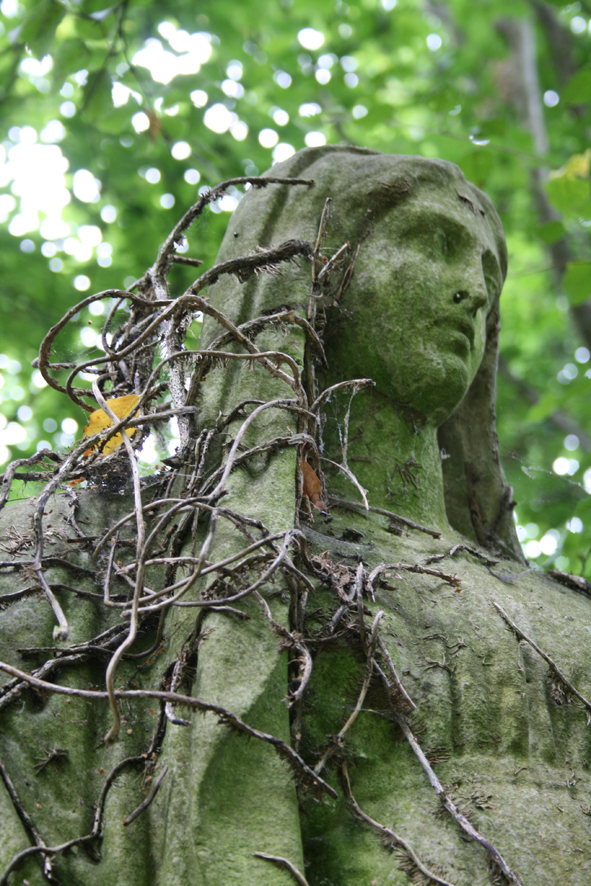In
the last week or two I have become a volunteer at the Garden Museum. The Museum
is located on Lambeth Road on the south bank of the Thames, right next to
Lambeth Palace by Lambeth Bridge. The garden is planted on a very ancient grave
yard, and I have been told that the occasional human bone has been dug up
whilst planting.
On
the first day as I was sweeping up some leaves, I overheard someone reading
from an information sheet about the tomb of the Tradescant family. My ears
pricked up when I heard the words seven headed dragon. For those who have followed my blog, you will
know that several posts have been dedicated to the search for the dragons of
London. Here I was standing next to a seven headed dragon and a lady dragon at
that, and I had completely missed it. I have meet several lady dragons in my
life but they have only ever had one head, but that’s another story.
*The
great stone tomb of the Tradescants, is one of the most important churchyard
monuments in London. It was commissioned by Hester Tradescant, widow of the
younger John after his death in 1662. The panels carved into the sides of the
monument depict objects from the Tradescants’ collection and images of ruins.
Dr Roger Bowdler of English Heritage has described the tomb as pivotal in the
development of the English churchyard tomb. It was one of the very first
examples of a prominent monument to be built in a churchyard, as opposed to
inside.

On
the west end of the tomb, which faces away from the church you will see a skull
lacking a bottom jaw, and a seven head monster described by the 17th century
antiquary John Aubrey as “ an Hieroglyphical Dragon” (meaning symbolical or
emblematic). According to Topsell’s
History of Serpents (1658) dragons are the watchers and keepers of riches and
treasures. This may suggest the dragon here is to protect the rare species of
plants that had been collected, on the many adventurous and hazardous travels
of the plant seekers. On the tomb you can read these words:
“Know stranger as thou pass, beneath this stone
Lye John Tradescant grandsire, father, sone
The last died in his spring, the other two
Lived till they had travelled art and nature thro’
By their choice collections may appear
Of what is rare in land in sea and air
Whilst they (as Homer’s Iliad in a nut)
A world of wonders in one closet shut
These famous Antiquarians that had been
Both gardeners to the Rose and Lily Queen
Transplanted now themselves, sleep here, and when
Angels shall with their trumpets waken men
And fire shall purge the world, these hence shall rise
And change this garden for a Paradise.”
Next
to the tomb of the Tradescants, you will find resting place of another famous
family. Admiral William Bligh, of mutiny on the Bounty fame also has a tomb in the
garden. Admiral William Bligh, who became an Admiral after the mutiny lived in Lambeth. Just a short walk up Lambeth Road opposite
the Imperial War Museum you will find his blue plaque. Another interesting fact: After the mutiny Bligh was appointed governor of New South Wales, so the Garden gets a lot of Aussie visitors to see 'Governor' Blighs tomb.
The
Bothy
According
to Wikipedia, a bothy is a basic shelter, usually left unlocked and
available for anyone to use free of charge. It was also a term for basic
accommodation, usually for gardeners or other workers on an estate. Bothies are
to be found in remote, mountainous areas of Scotland, Northern England,
Ireland and Wales. The Garden shed in the Garden Museum is known by some as the
Bothy. It certainly is small and basic, but you couldn’t describe it as being
remote or in a mountainous area.
 Anyway
I knocked a carving so any would be travellers looking for accommodation for
the night would know where to stay. One such local traveller turned up at the
weekend a Mr F. Fox. On the Lambeth road side of the garden are few very tall Plane
trees and when autumn comes the garden fills with Plane tree leaves, which are a
real problem. It just so happened, I had a piece of Plane timber, so I used it to
carve the sign. It seemed kind of apt and I carved a leaf on as well. Normally I would plain smooth the timber, but this time I left it rustic, I think its better.
Anyway
I knocked a carving so any would be travellers looking for accommodation for
the night would know where to stay. One such local traveller turned up at the
weekend a Mr F. Fox. On the Lambeth road side of the garden are few very tall Plane
trees and when autumn comes the garden fills with Plane tree leaves, which are a
real problem. It just so happened, I had a piece of Plane timber, so I used it to
carve the sign. It seemed kind of apt and I carved a leaf on as well. Normally I would plain smooth the timber, but this time I left it rustic, I think its better.
 So
why not give the Garden Museum a visit and see for yourself. At the very least
visit the Cafe inside and enjoy the lovely food on offer. This culinary heaven
has just been placed in the top ten museum restaurants in the world. Taste the
food for yourself and see why.
So
why not give the Garden Museum a visit and see for yourself. At the very least
visit the Cafe inside and enjoy the lovely food on offer. This culinary heaven
has just been placed in the top ten museum restaurants in the world. Taste the
food for yourself and see why.




















































